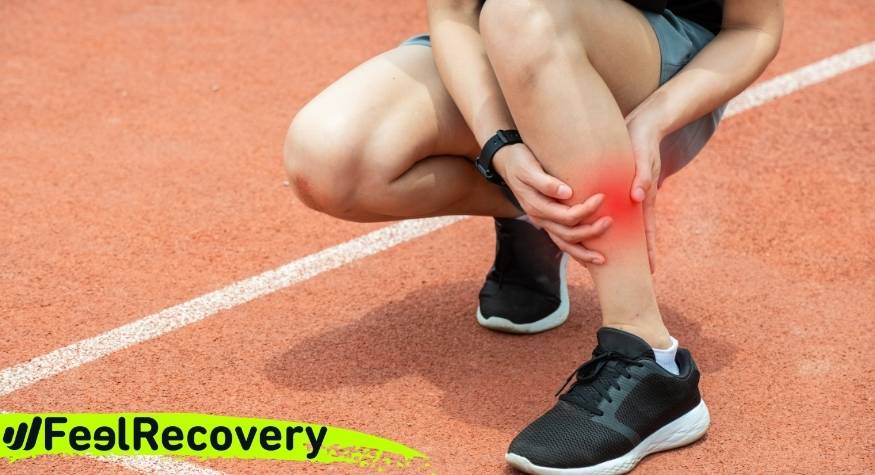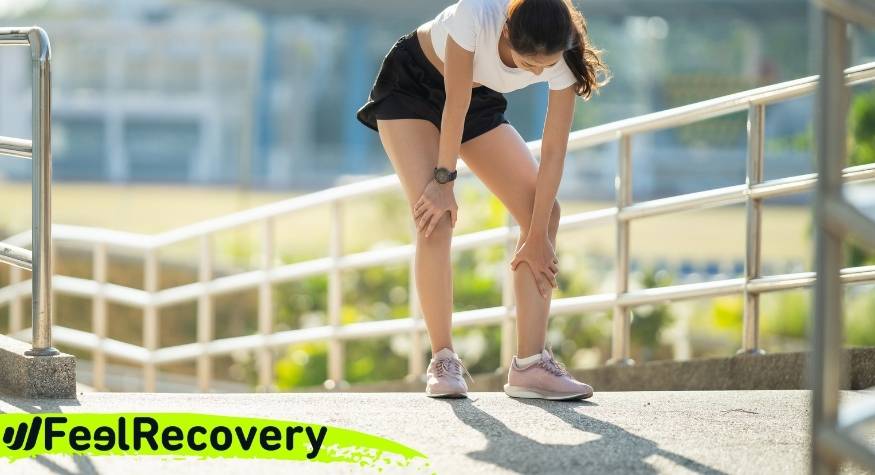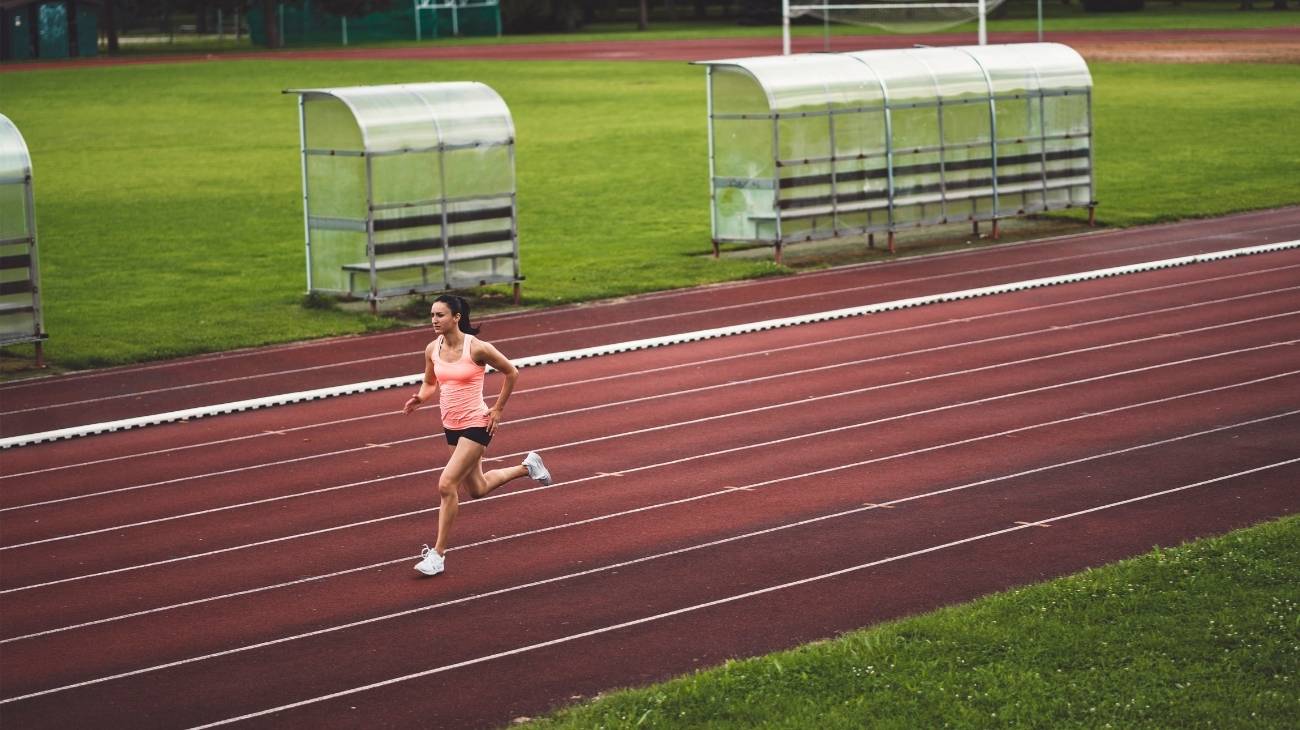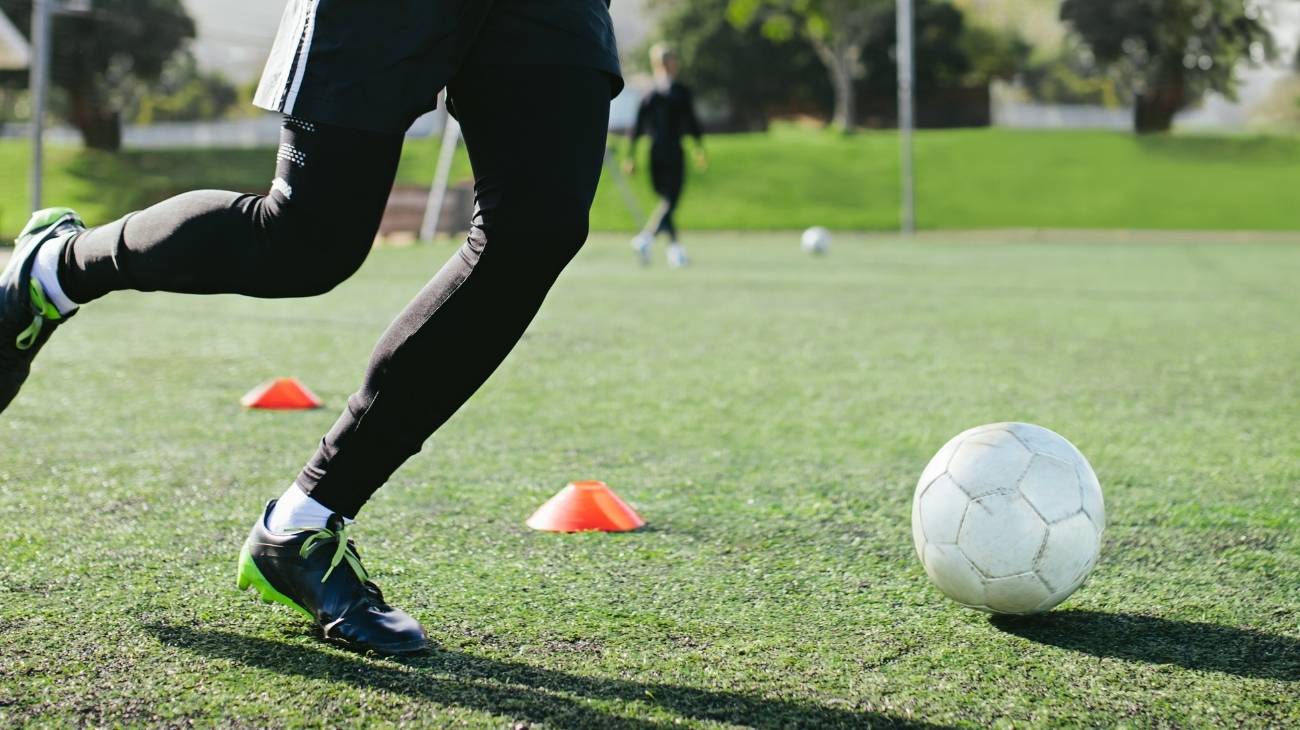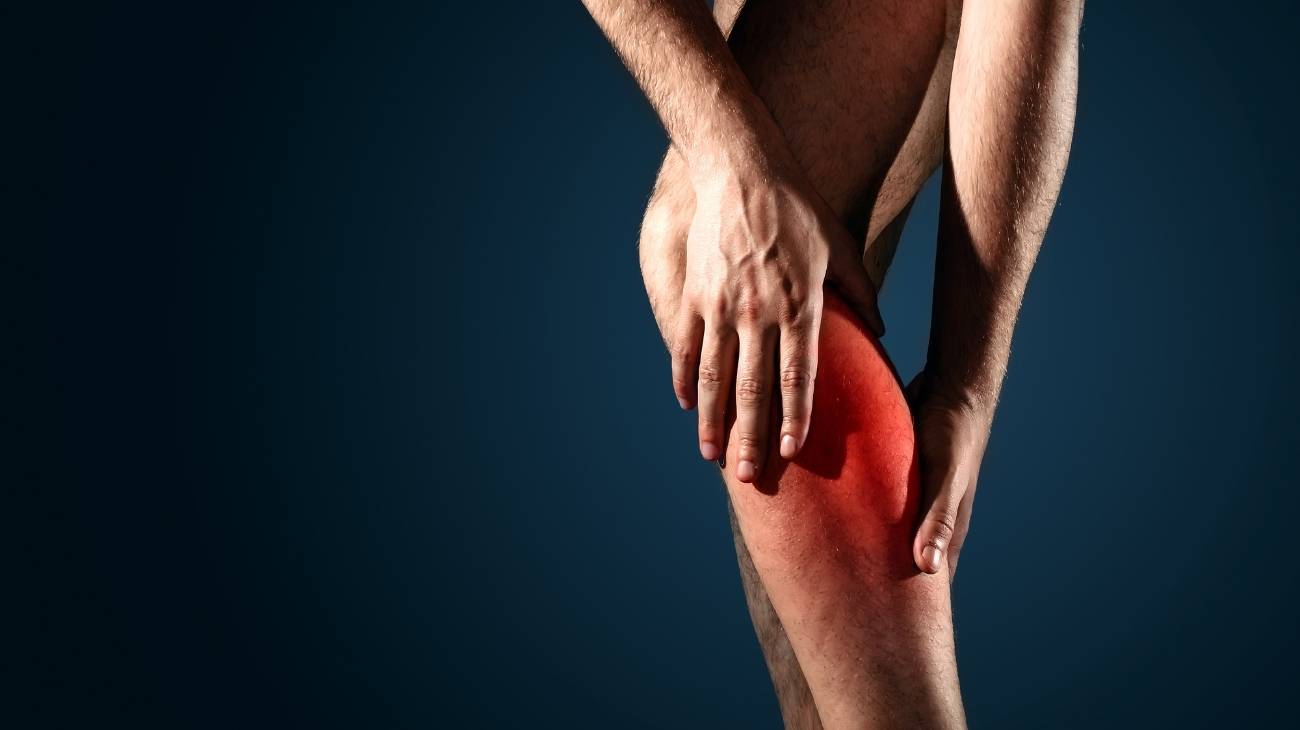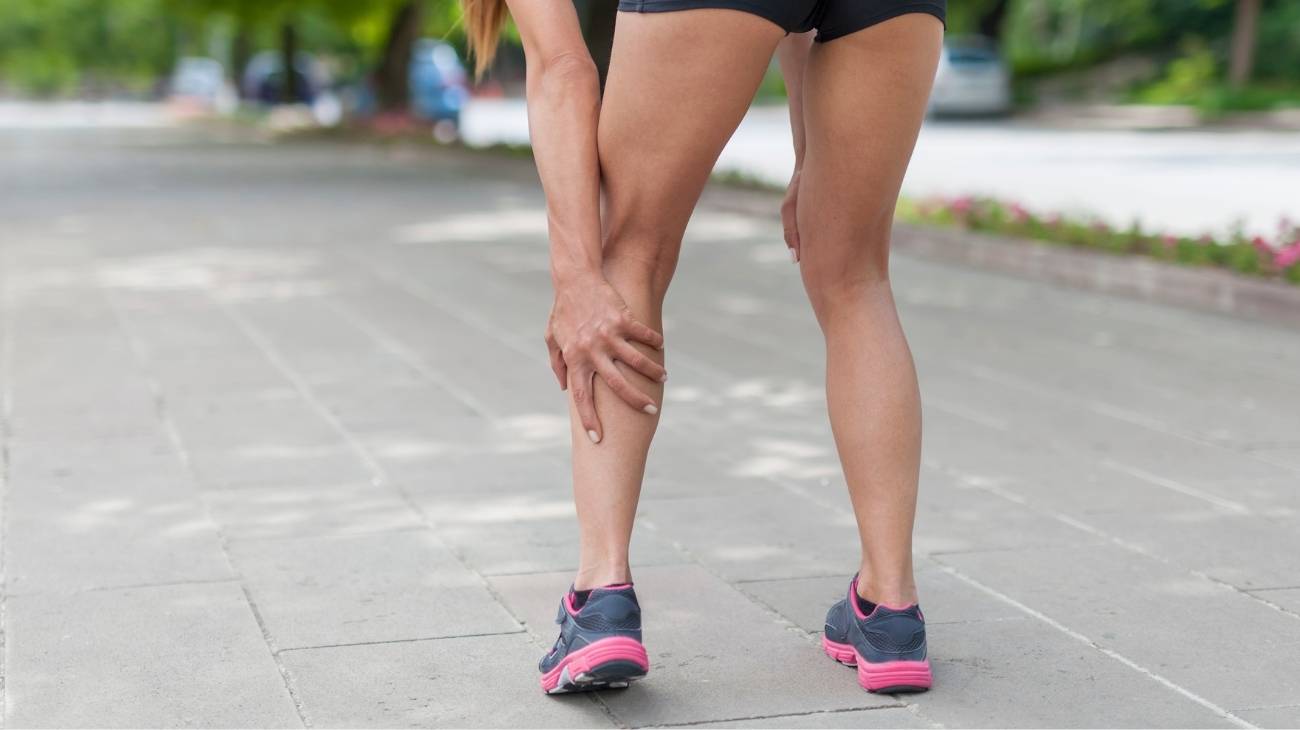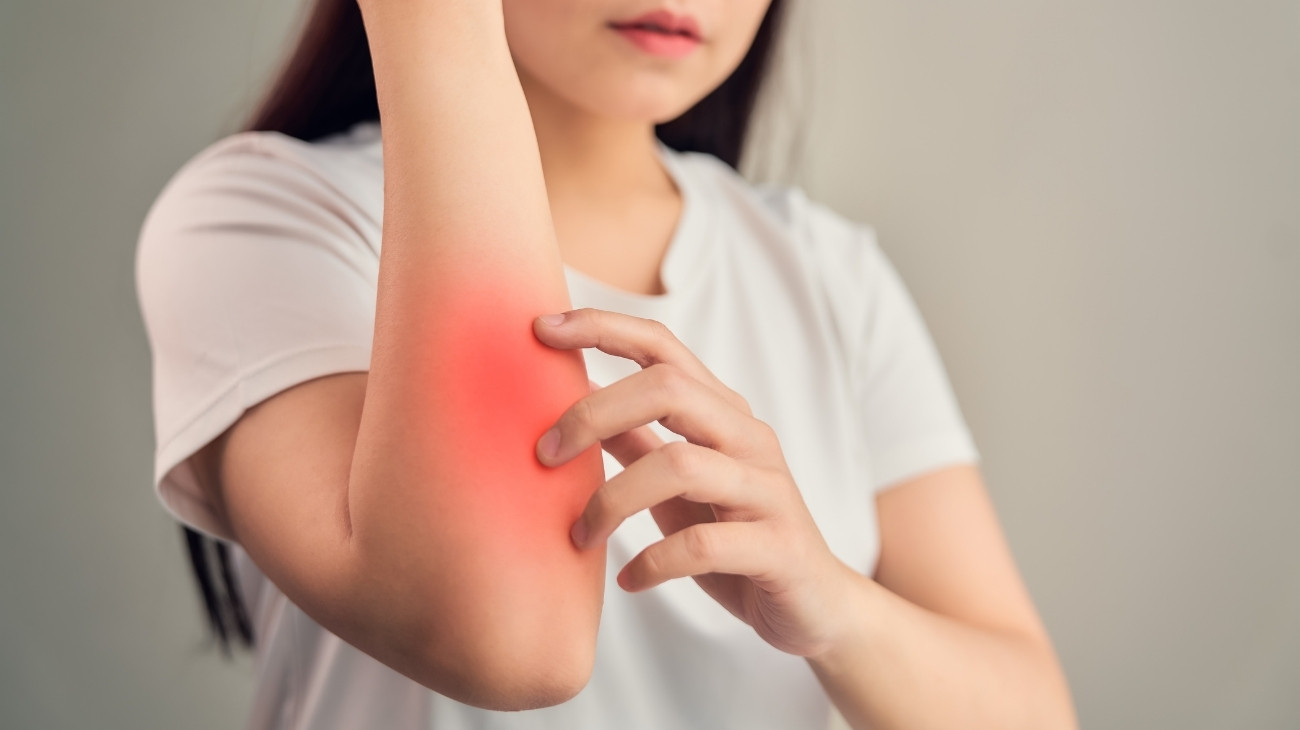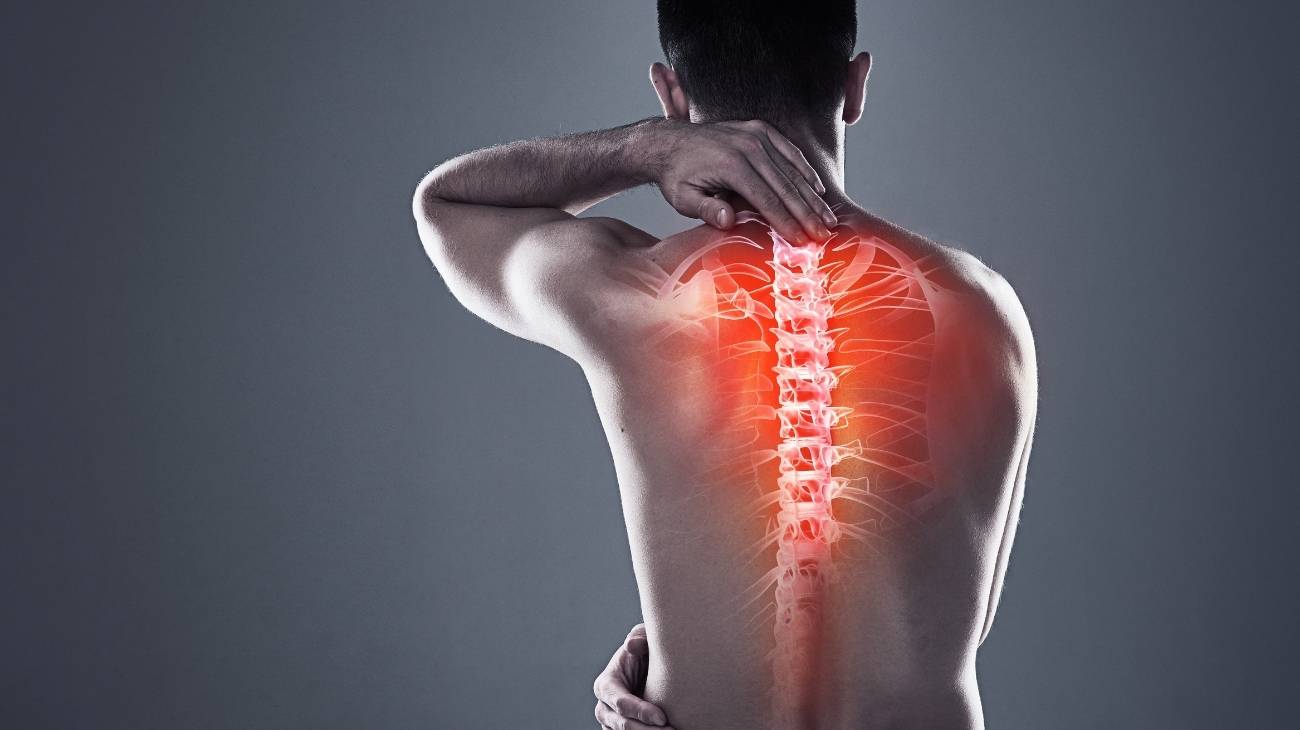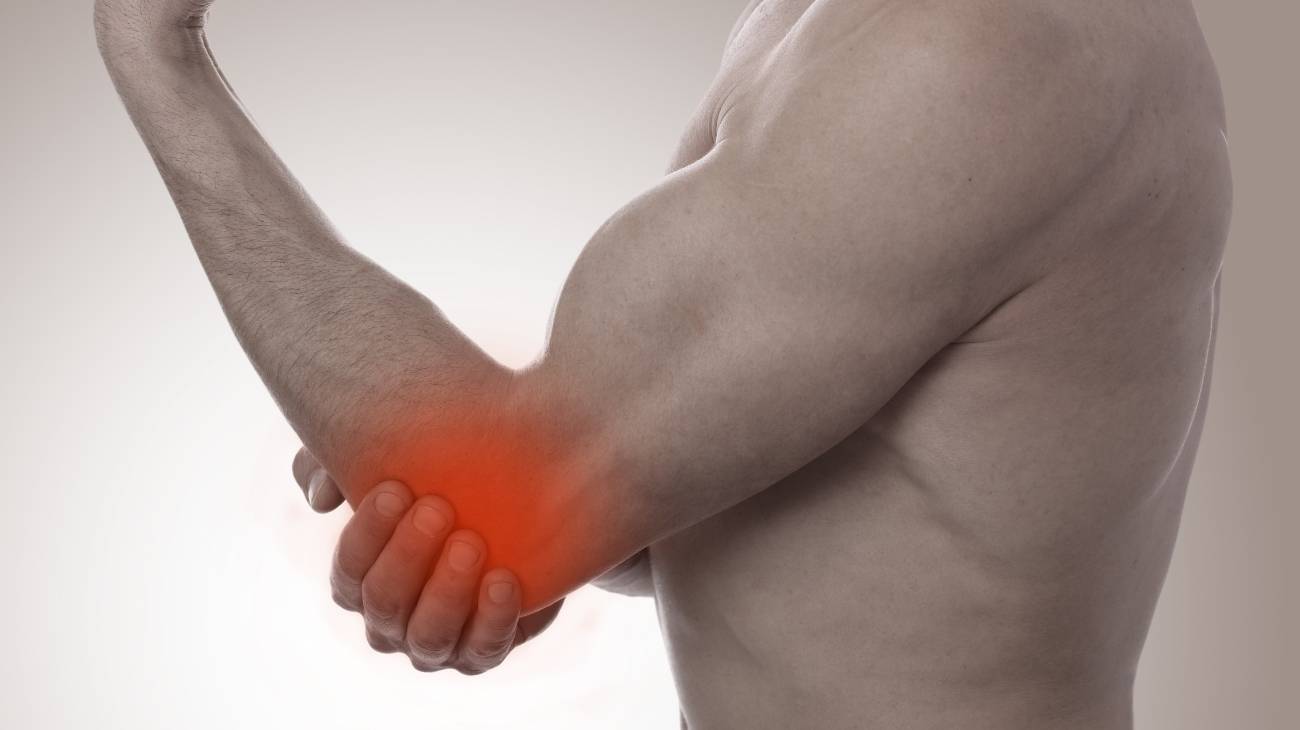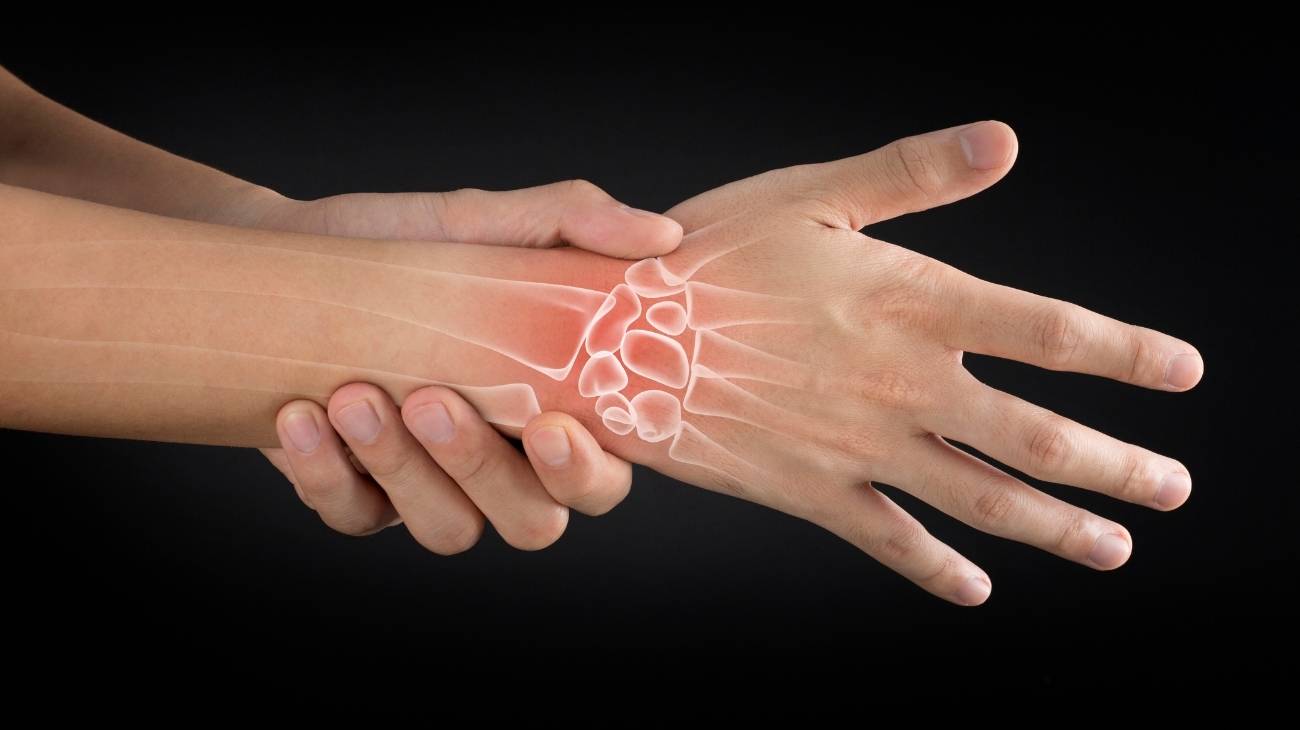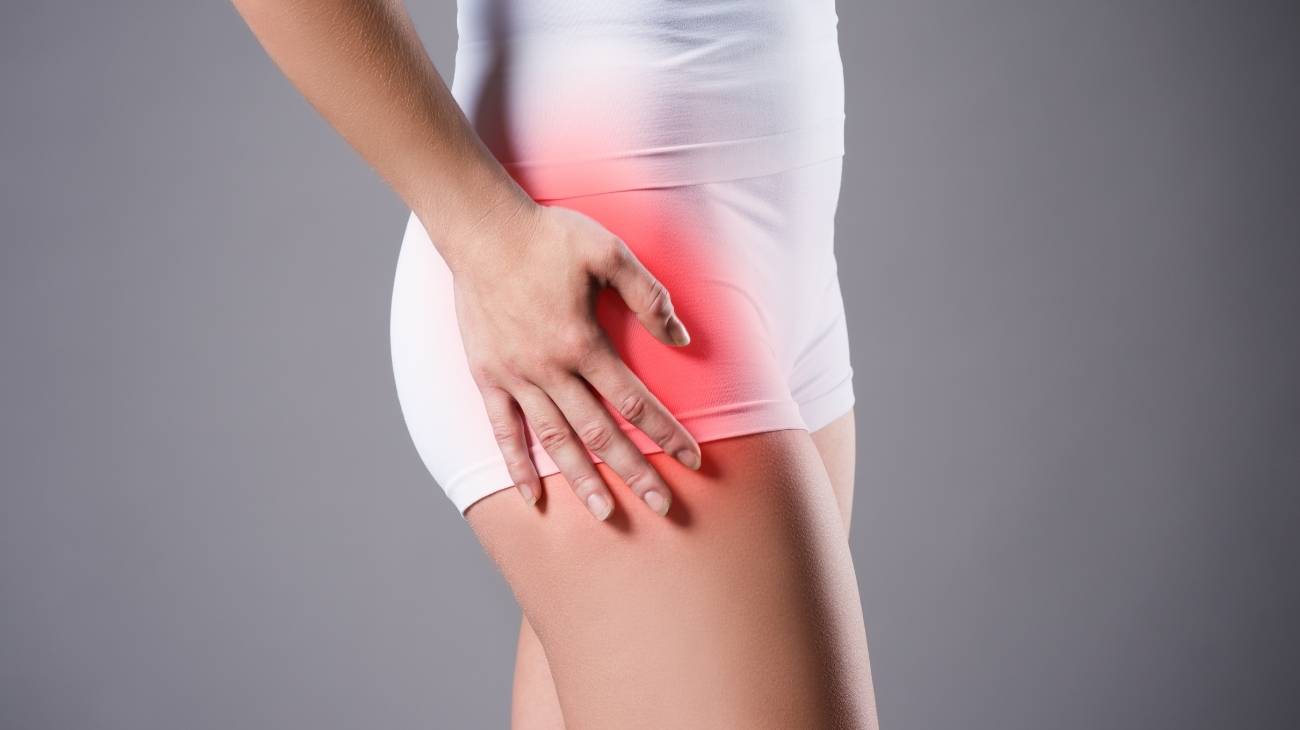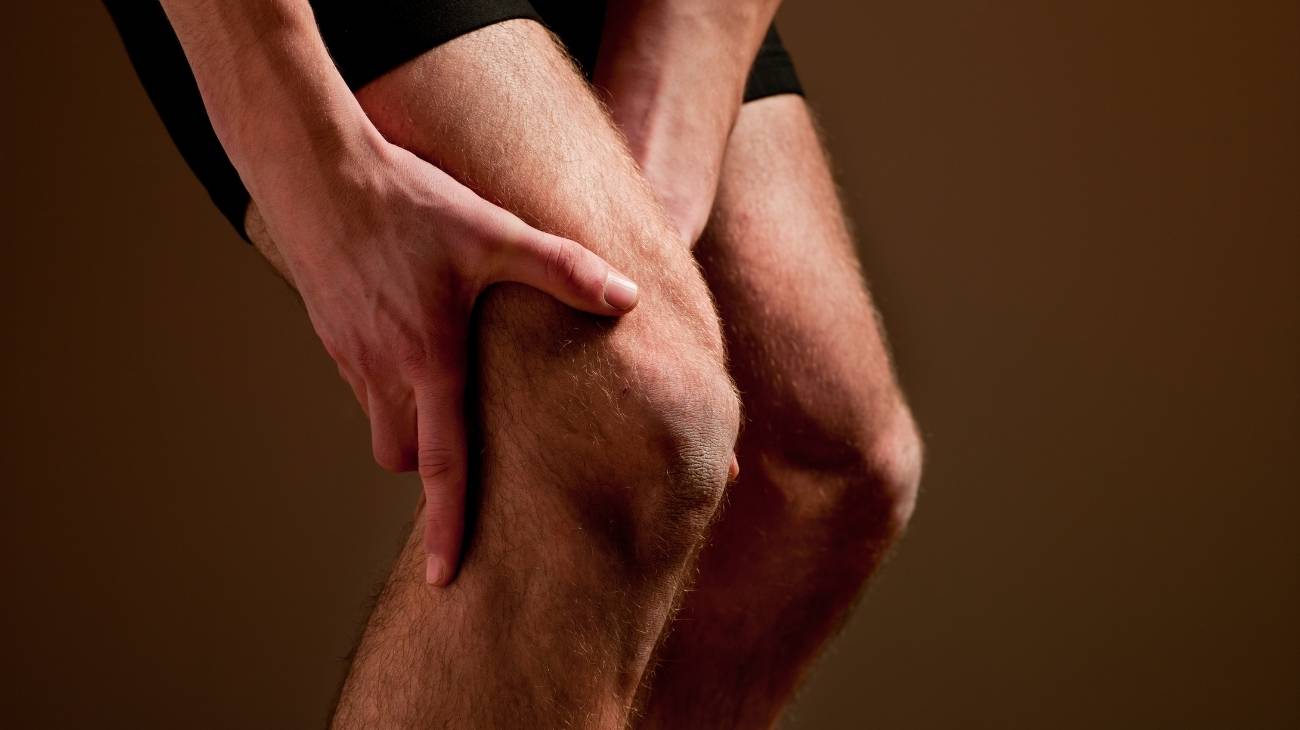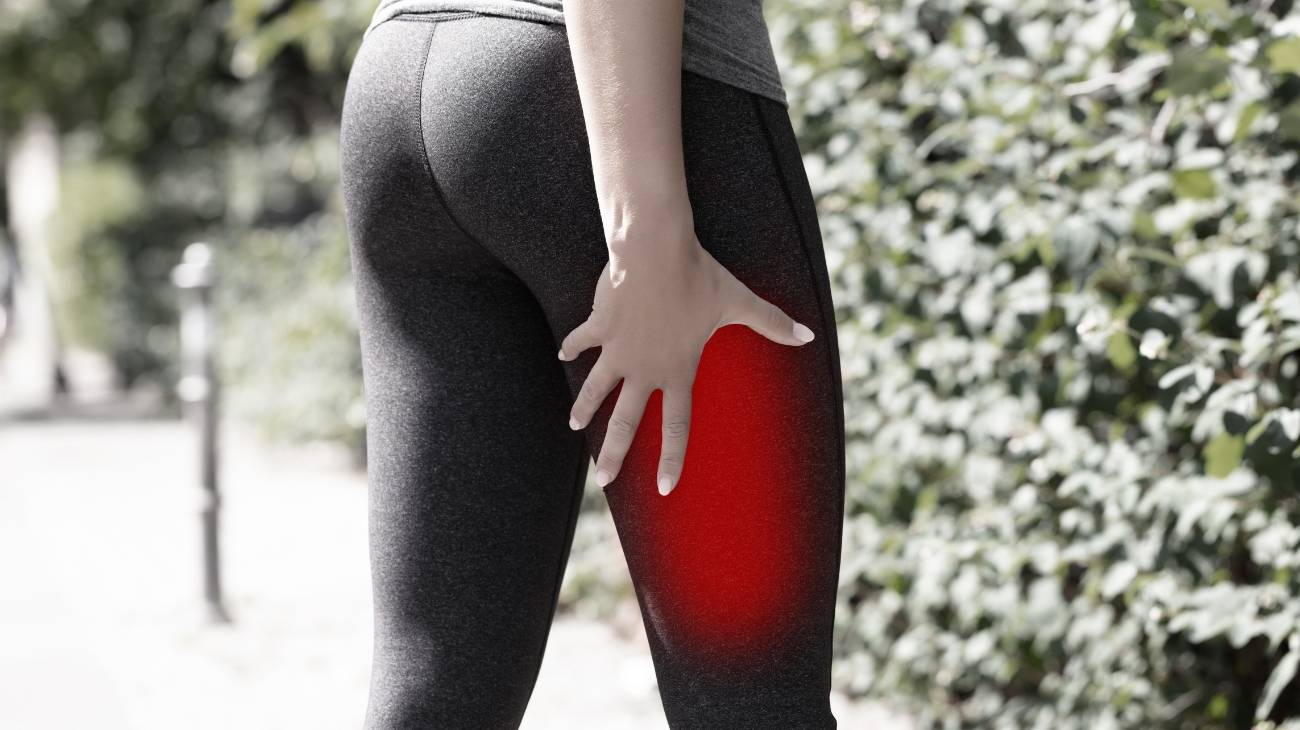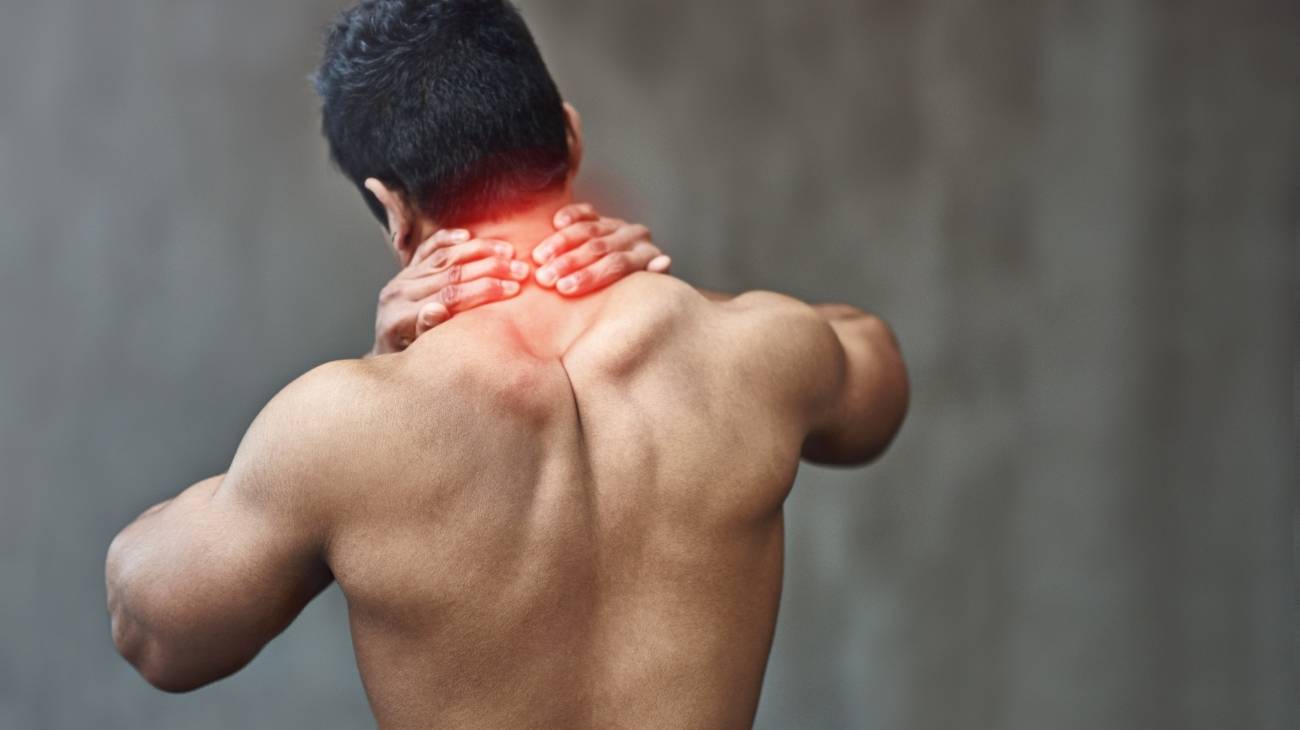The calf muscles are strong and resilient, so injuries to the calf muscles are often associated with wear and tear from physical activity and sports. They are responsible for walking and running momentum, body stability and ankle movement.
In this article we will answer your questions about the most common calf injuries, as well as the main causes of pain in this muscle group and what symptoms you should pay attention to in order to avoid a chronic injury.
What types of calf injuries can we suffer?
The calf muscles are muscles that connect to two joints, the knee and the ankle, and allow mobility of both the leg, as they are connected to the femur, and the ankle, as they are connected to the Achilles tendon. Here are the most common injuries.
Muscle overload
When the body is not prepared to withstand heavy physical exertion, the calf muscles are the muscles that bear the brunt of the intensity of physical activity. Outside of the sporting world, it is unlikely that the calf muscles will end up injured, although it is possible in some jobs that require constant physical demands.
When overloaded, the muscles become fatigued and you feel a weakening of the leg due to excessive strain on the calf muscles. You may even feel that the muscle has shifted towards the top of your leg, a sensation known as a pulled calf.
Cramps
Muscle cramps are small contractions that occur after intense physical activity. Perhaps from running a medium distance to catch a bus or climbing several floors of a building. All of these are movements that activate the calf muscles and can injure them if you are not in optimal shape.
It is a discomfort that lasts only a few days. Most commonly, they are contractions that disappear completely after a good rest for two or three days. During a cramp there is an intense and persistent pain.
Strains
Muscle strains are also involuntary and persistent contractions, but they occur at the same time as the physical activity. It is common in amateur athletes who push themselves beyond what their bodies are prepared for and without warming up properly.
Unlike cramps, contractures are more intense and cause more pain. With your hands you can feel that the back of the calf is tight. It affects the mechanics of leg movement and symptoms can last up to seven days.
Tears
The calf muscles can be partially or completely torn if the physical effort has been very intense and sudden. This is why we say that these injuries are typical of sports such as football or athletics, in which movements such as sprints, starts, jumps and sudden stops are related to them. Although age and the loss of elasticity in the muscles can make us more prone to suffer these injuries.
When the fibres of the calf muscles are torn, rest is required for several weeks, and when the tear is complete, it is time to undergo arthroscopic surgery to repair the damaged fibres.
Fibrillar micro-tear
Before there is a complete tear, there may be small tears in the muscle fibres. In such cases the affected muscle becomes inflamed and there is a slight pain when continuing to move. Sometimes it bothers walking when the injury occurs in the calf.
Excessive stretching of the calf muscle disturbs the function of its fibres and the associated and connected tissues. Rest for several days should be sufficient to allow the damaged cells to regenerate.
Tibia or fibula fracture
Although these bones are very strong, suffering a direct contusion during sport or an accident at home, or even suffering from degenerative diseases such as osteoporosis or arthritis, can cause them to fracture easily. The fibula is the most commonly injured bone, especially in the lower part, just before it connects to the ankle joint.
A fracture can be partial or total, which will determine whether immobilisation and compression is sufficient or whether surgery is needed to heal it. This is a serious injury and we should see a doctor as soon as possible so that we can be treated correctly.
Achilles tendonitis
This is inflammation of the tendon that connects the heel to the ankles, a tissue that is essential for the functioning of the ankle joint. When tendonitis occurs, you feel stiffness and intense pain in the lower part of the calf, which, if severe, can even radiate to the upper part of the calves.
The use of inappropriate footwear, excessive repetitive movements or intense sports practice without good preparation are often the cause of this type of ailment, which although it does not directly affect the calf muscle, it is closely related to it.
Venous thrombosis
The body is full of veins and arteries, and when a clot is generated in one of them that obstructs the blood, what is known as venous thrombosis occurs. This is a serious problem, as the clot usually moves through the bloodstream and can reach the lungs, heart or brain and cause serious damage to our health.
If it is located in the twins it is a "good" sign, as there is enough time to treat it before it reaches an important organ. You will feel a pain that starts as a mild discomfort until it intensifies and radiates to the feet.
Best products for calf injury recovery
Bestseller
-
2 Calf Compression Sleeve (Black/Gray)
$19.95 -
2 Calf Compression Sleeve (Green/Navy)
$19.95 -
2 Calf Compression Sleeve (Pink/Bordeaux)
$19.95 -
Acupressure Mat and Pillow (Black/Gray)
$49.95 -
Acupressure Mat and Pillow (Green/Navy)
$49.95 -
Acupressure Mat and Pillow (Pink/Bordeaux)
$49.95 -
Acupressure Pillow (Black/Gray)
$29.46 -
Acupressure Pillow (Green/Navy)
$29.46 -
Acupressure Pillow (Pink/Bordeaux)
$29.46 -
Foot Massage Roller for Plantar Fasciitis (Black)
$19.95 -
Foot Massage Roller for Plantar Fasciitis (Green)
$19.95 -
Foot Massage Roller for Plantar Fasciitis (Pink)
$19.95 -
Heating Pad for Microwave Classic Bottle Shaped (Hearts)
$19.95 -
Heating Pad for Microwave Classic Bottle Shaped (Oxford)
$19.95 -
Heating Pad for Microwave Classic Bottle Shaped (Sport)
$19.95 -
High Density Foam Roller for Muscle (Black/Gray)
$29.95 -
High Density Foam Roller for Muscle (Green/Navy)
$29.95 -
High Density Foam Roller for Muscle (Pink/Bordeaux)
$29.95 -
Ice Massage Roller Ball (Black)
$39.95 -
Ice Massage Roller Ball (Green)
$39.95 -
Ice Massage Roller Ball (Pink)
$39.95 -
Microwave Heating Pad for Back Pain Relief (Extra Large) (Hearts)
$29.95 -
Microwave Heating Pad for Back Pain Relief (Extra Large) (Oxford)
$29.95 -
Microwave Heating Pad for Back Pain Relief (Extra Large) (Sport)
$29.95 -
Microwaveable Heating Pad for Pain Relief (Hearts)
$19.95 -
Microwaveable Heating Pad for Pain Relief (Oxford)
$19.95 -
Microwaveable Heating Pad for Pain Relief (Sport)
$19.95 -
Pack 2 In 1 Foam Roller High + Soft Density (Black/Gray)
$29.95 -
Pack 2 In 1 Foam Roller High + Soft Density (Green/Navy)
$29.95 -
Pack 2 In 1 Foam Roller High + Soft Density (Pink/Bordeaux)
$29.95 -
Soft Density Foam Roller for Recovery (Black)
$29.95 -
Soft Density Foam Roller for Recovery (Green)
$29.95 -
Soft Density Foam Roller for Recovery (Pink)
$29.95 -
Sport Compression Socks (1 Pair) (Black/Gray)
$19.95 -
Sport Compression Socks (1 Pair) (Green/Navy)
$19.95 -
Sport Compression Socks (1 Pair) (Pink/Bordeaux)
$19.95 -
Trigger Point Massage Stick (Black)
$14.95 -
Trigger Point Massage Stick (Green)
$14.95 -
Trigger Point Massage Stick (Pink)
$14.95
What are the causes of leg and calf pain?
In everyday life, the calf muscles are injured by sudden, intense exertion. Repetition of movement is not necessary, as these muscles are injured by sudden and very intense efforts. In the sporting world, hard training and lack of muscle preparation increase the risk of calf injuries.
Inadequate training
It is not enough to be efficient in the specific training of each sporting discipline, it is also important to warm up well before training and to cool down the body after completing an exercise routine. The benefits of doing these steps are that the body will be better prepared for a future training session and the possibility of cramps and pain due to muscle fatigue will be reduced.
Sedentary lifestyle
It is estimated that more than 30% of the world's population does not engage in physical activity that gives their bodies a minimum of mobility. In addition to other factors, this affects flexibility, elasticity and muscle tone. This is a public health problem that affects the proper functioning of bones, joints and soft tissues such as muscles. If the body is not active, the fibres atrophy because they understand that they do not need to be used.
Poor nutrition
Glucose provides the fuel that all muscles need. It comes from the carbohydrates that people get at every meal, so it's important to maintain a balanced diet to keep muscles healthy.
Protein provides muscle repair and muscle building and water will allow for better circulation of nutrients in the body. If you are not well nourished, there is an increased chance that your body will not react correctly to an incident at home or work and severe injuries will occur.
Obesity
According to the latest studies, more than 39% of people in the world are overweight and more than 13% are obese. As the legs support the entire weight of the body and maintain balance when walking, the calves must be in perfect shape to contribute to their proper functioning. The heavier the weight, the greater the wear and tear on this muscle group, and therefore the greater the risk of injury.
Muscle atrophies
Another risk factor is genetic diseases and ailments that alter muscle function. One of these is muscle atrophy, which involves a decrease in muscle mass and affects their ability to stretch and contract.
Although the calf muscles are strong fibrous masses, they are not exempt from infections that limit their flexibility and functionality. Whenever there are signs of discomfort or pain, a doctor should be consul ted for an examination and a correct diagnosis.
What are the symptoms of calf and soleus pain?
The two calf muscles and the soleus make up the muscle group we have been talking about. When an injury is approaching, you should be aware of the following signs, this will help you to avoid future and possible complications.
- Tightness and shortening: When muscles are fatigued, it affects their proper functioning and one way to notice this is in the morning, when your body is relaxed. At these times there is no reason to feel muscle tension, yet you find it difficult to extend your leg.
- Back pain: You may feel pain in your calf muscles, but this may not be the source of the problem, but may be due to sciatica or a herniated disc.
- Difficulty moving: Especially when you want to move your ankle, you will find it difficult to do so. The calf muscles pass through the knee joint and through the ankle, so muscle fatigue will also limit flexion at the joints.
- Circulatory problems: In extreme cases, muscle strain results in vascular and nerve compression in the areas where the tendon arch of the soleus muscle is present.
- Inability to stand on tiptoe: If the origin of the pain is achilles tendonitis, it will be difficult or impossible to stand on tiptoe.
- Dizziness and shortness of breath: If the cause of the pain is venous thrombosis, these symptoms may be felt when the clot begins to move through the bloodstream.
- Deformity: With a complete tear of the muscle fibres, the calf will be visibly deformed, so starting recovery treatment will be extremely urgent to avoid permanent damage.
- Inflammation: Another sign that a tear has occurred or may even be indicative of a fractured tibia or fibula.
- Warmth and pain to touch: When a bone is fractured or muscles are torn, you may feel pain when touching the calf and a rise in temperature in the injured area.
- Fever: If the source of the pain is an inadequately treated fracture or a badly broken bone, a fever may develop.
How to apply the RICE therapy to treat calf injuries?
The PRICE therapy is a set of steps to follow to provide first aid for minor injuries. It was first introduced in the late 1970s. PRICE is an update of the RICE therapy, as it was better known in that decade.
- Protection: Cover the calf with a first aid bandage to provide some muscle compression and prevent associated injury. You should remain seated or lying down to give the muscle a chance to relax.
- Rest: This involves minimising voluntary and involuntary movements in the leg. When the muscle fibres relax, the regeneration process of the damaged cells begins.
- Ice: It has an anti-inflammatory and analgesic effect that will help relieve pain throughout the leg and reduce localised swelling. It should be applied for 15-20 minutes at each session and at least 3 times a day.
- Compression: Protect the calf area with compression garments, these clothing provide the pressure you need to lower blood flow. If you feel tingling, it is because the garment is exerting too much pressure.
- Elevation: Elevate your leg on a cushion so that the effect of gravity helps to lower blood pressure and reduce pain and swelling. This position should be maintained for 48 to 72 hours.
Common calf sport injuries
If you play sports on an amateur basis, these are the injuries you need to watch out for and prevent in order to continue your physical activity. Whether you play football, basketball or tennis, or even less intense sports like golf, leg injuries, especially to the calf, are never exempt.
Common calf and leg injuries
Check out these signs to look out for to avoid complications when you have a calf or thigh ailment. Knowing what the symptoms and causes of calf injuries are will help you prevent them in advance and avoid relapsing into future injuries.
References
- Campbell, J. T. (2009). Posterior calf injury. Foot and ankle clinics, 14(4), 761-771. https://www.foot.theclinics.com/article/S1083-7515(09)00077-1/fulltext
- Fields, K. B., & Rigby, M. D. (2016). Muscular calf injuries in runners. Current sports medicine reports, 15(5), 320-324. https://journals.lww.com/acsm-csmr/fulltext/2016/09000/Muscular_Calf_Injuries_in_Runners.9.aspx
- Bright, J. M., Fields, K. B., & Draper, R. (2017). Ultrasound diagnosis of calf injuries. Sports health, 9(4), 352-355. https://journals.sagepub.com/doi/abs/10.1177/1941738117696019
- Green, B., & Pizzari, T. (2017). Calf muscle strain injuries in sport: a systematic review of risk factors for injury. British journal of sports medicine, 51(16), 1189-1194. https://bjsm.bmj.com/content/51/16/1189?hootPostID=8dbac92262359e5c3a3438f4e11668c6
- Bryan Dixon, J. (2009). Gastrocnemius vs. soleus strain: how to differentiate and deal with calf muscle injuries. Current reviews in musculoskeletal medicine, 2(2), 74-77. https://link.springer.com/article/10.1007/s12178-009-9045-8
- Hägglund, M., Waldén, M., & Ekstrand, J. (2013). Risk factors for lower extremity muscle injury in professional soccer: the UEFA Injury Study. The American journal of sports medicine, 41(2), 327-335. https://journals.sagepub.com/doi/abs/10.1177/0363546512470634
- Van Middelkoop, M., Kolkman, J., Van Ochten, J., Bierma‐Zeinstra, S. M. A., & Koes, B. W. (2008). Risk factors for lower extremity injuries among male marathon runners. Scandinavian journal of medicine & science in sports, 18(6), 691-697. https://onlinelibrary.wiley.com/doi/abs/10.1111/j.1600-0838.2007.00768.x
- Prakash, A., Entwisle, T., Schneider, M., Brukner, P., & Connell, D. (2018). Connective tissue injury in calf muscle tears and return to play: MRI correlation. British journal of sports medicine, 52(14), 929-933. https://bjsm.bmj.com/content/52/14/929.abstract
- Orchard, J. W. (2001). Intrinsic and extrinsic risk factors for muscle strains in Australian football. The American journal of sports medicine, 29(3), 300-303. https://journals.sagepub.com/doi/abs/10.1177/03635465010290030801
- Altman, A. R., & Davis, I. S. (2016). Prospective comparison of running injuries between shod and barefoot runners. British journal of sports medicine, 50(8), 476-480. https://bjsm.bmj.com/content/50/8/476.short

